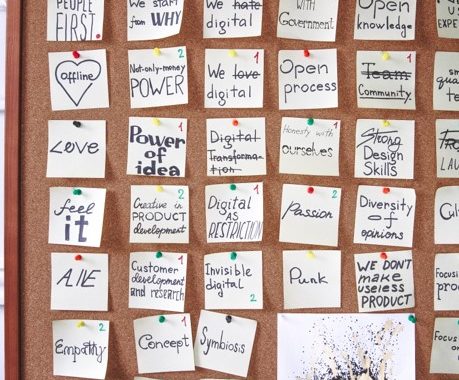Learning Experience Design (LXD) is the creative and intentional process of designing learning experiences for lasting results. The concept of “learning experience” is nothing new, but it’s certainly full of ambiguity today. I mean, 100 years ago, scholars like Dewey, Thorndike and Lindeman gave us many thoughts that challenged institutional educational and learning practices. Dewey specifically, called for a “theory of experience” and discussed how experience is an active-passive affair where learners do something and then undergo the consequences of their actions. For example, to learn how to swim, one must swim; to learn how to ride a horse, true learning won’t occur once one rides one. The value of experience is essential, but not absolute. The learner has to undergo the consequences of the experience, receive feedback and improve upon it. Here are the basic principles of LXD and how they contribute to highly effective learning. Their order is not hierarchical.
1. Actions Over Intellectualism
Effective learning experiences focus on active experimentation which lead to outcomes and improvements on those outcomes. As LX designers we need to promote active involvement in safe environments where learners acquire knowledge and skills through experimentation first, not thinking and rationalizing as spectators i.e. To become a philosopher, one must philosophize and realize how good or better one can be.
2. Human-Centered and Systemic Approaches
Human-centered approaches consider the what and why of learning focusing on the human experience each step of the learning journey. This concept is also known as empathy. Systemic approaches include environmental considerations affecting how, where and when learners perform. We need both! Human-centered designs alone may only lead to temporary results. Systemic approaches alone focus on the organization and may miss affective elements of the experience i.e. how the learner feels about it. In the end, people do the work, not systems. However, bad systems will inhibit someone’s ability to do well.
3. Continuous Feedback
Experience is a constant variable. Whether the learning design is good or bad, the experience has an effect on the learner. Continuous Feedback is indispensable for improving the learning experiences. Feedback is not limited to formative (as you go) or summative (once you are done) evaluations. Feedback mechanisms need to be embedded throughout the learning experience i.e. coaching, brainstorming, collaborative exercises, facilitator/peer feedback. Feedback is a two-way street, from learner-to-facilitator and vice versa.
4. Flexible and Incremental Goals
The learner has to achieve small wins that accumulate to big successes. LXD encourages incremental and scaffolding challenges that lead towards present and future growth in the learner i.e. learners complete a tasks and reflect on their application now and in other scenarios. Learning is an ongoing process, not limited to one experience.
5. Design for Tasks and Problems
This one is best explained by Don Norman, the father of UX, as “the best way to learn is to be puzzled, but to have to solve a problem”. Just think of what people would encounter in real life and approximate learning activities as much as possible to that.
6. Performance is a Moving Target
Desired performance may occur after a few tries for some and several tries for others. Olympic athletes prepare and train for four years to outperform their competitors but only a few of hundreds make it to the main event. Does that mean the losers didn’t learn or perform? No, performance depends on much more than learning.
7. Include All Learning Domains
Cognition, behavior modification, and affective strategies must be part of LXD. Let’s consider this under the old adage “Give a man a fish, and you feed him for a day. Teach a man to fish, and you feed him for a lifetime” By addressing just the cognitive domain, knowledge and ability dissipate over time. By letting learners find their way first and providing guiding support later, you help modify their behavior and encourage their independence. Achieving independence leads to higher confidence and that leads to increased self-esteem.
8. LXD is Multimedia Based
LXD today is not limited to one learning delivery methodology. Even when the learning experience is face-to-face, different materials that contribute to achieving learning goals must be part of the experience.
9. LXD is a Leadership Exercise
Just like good leadership, LXD should declare clear and accountable expectations for the learner and the facilitator/designer as well. Learners need to know the what, why, how, when, where and whom is impacted by achieving these goals. The experience should foster and encourage relationships between the learner and support communities.
10. Context is Paramount
Quizzes and exams only make great test takers. If the goal is to enable learners to be great test takers, then quiz them to death. Mistakes are opportunities for success. The best sales person is an influencer and relationship builder, not a product expert. What’s the point here? Context. Design experiences within the context learners will perform in.
Wrap Up
In summary, as Dewey taught us 100 years ago, experience is active and passive as learners take action and undergo the consequences of those actions. LXD needs to be about the people and the systems they are subject to. You may have noticed there’s no mention of needs analysis and conventional analyses jargon. This is on purpose as I believe that by following these principles the data will reveal the needs during the design process i.e. focusing on actions can only be done by determining the actions needed. More work needs to be done and these principles are just a starting point for any designer.

